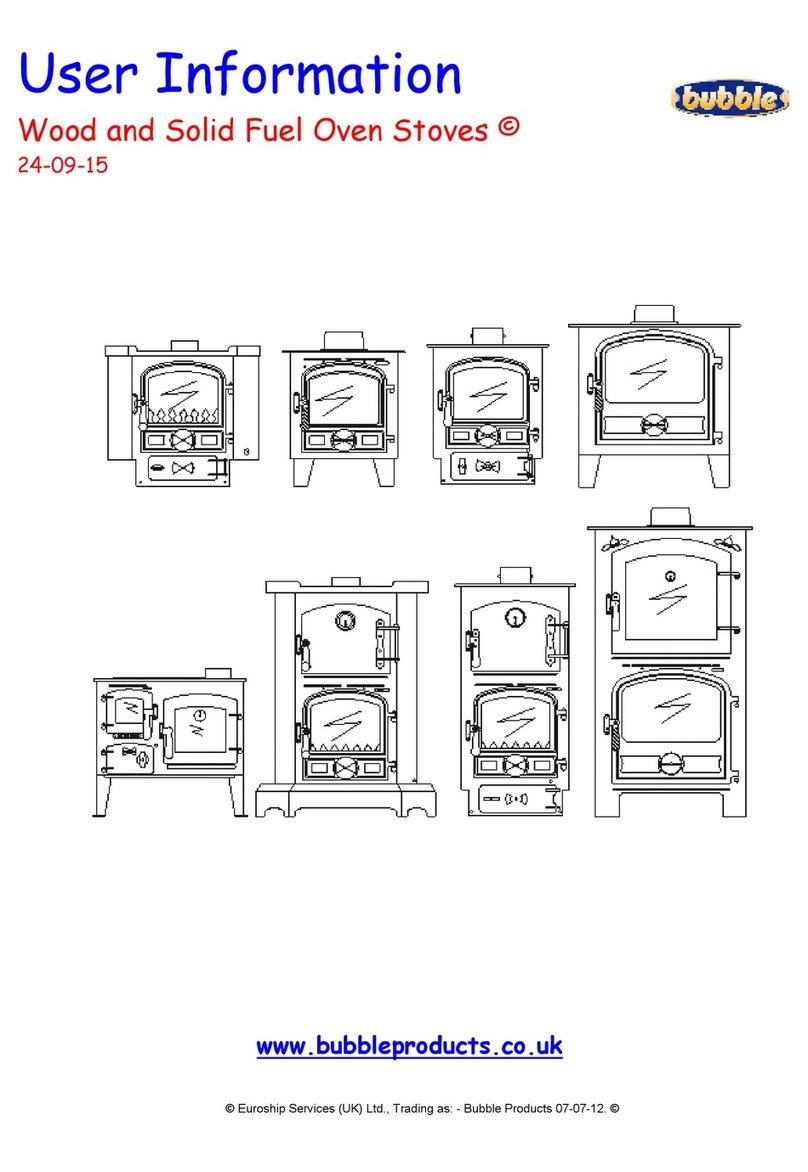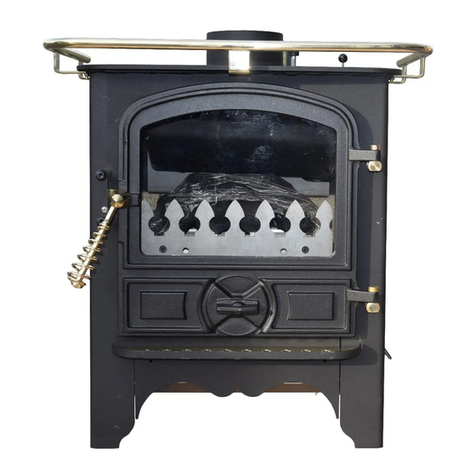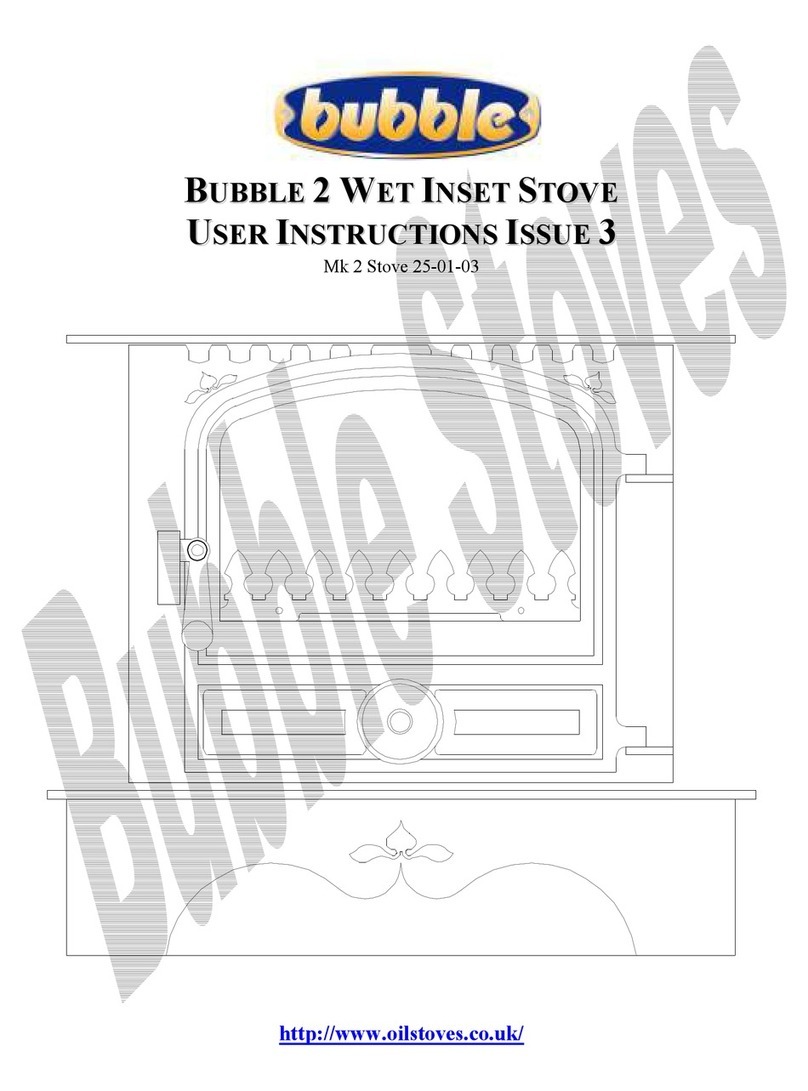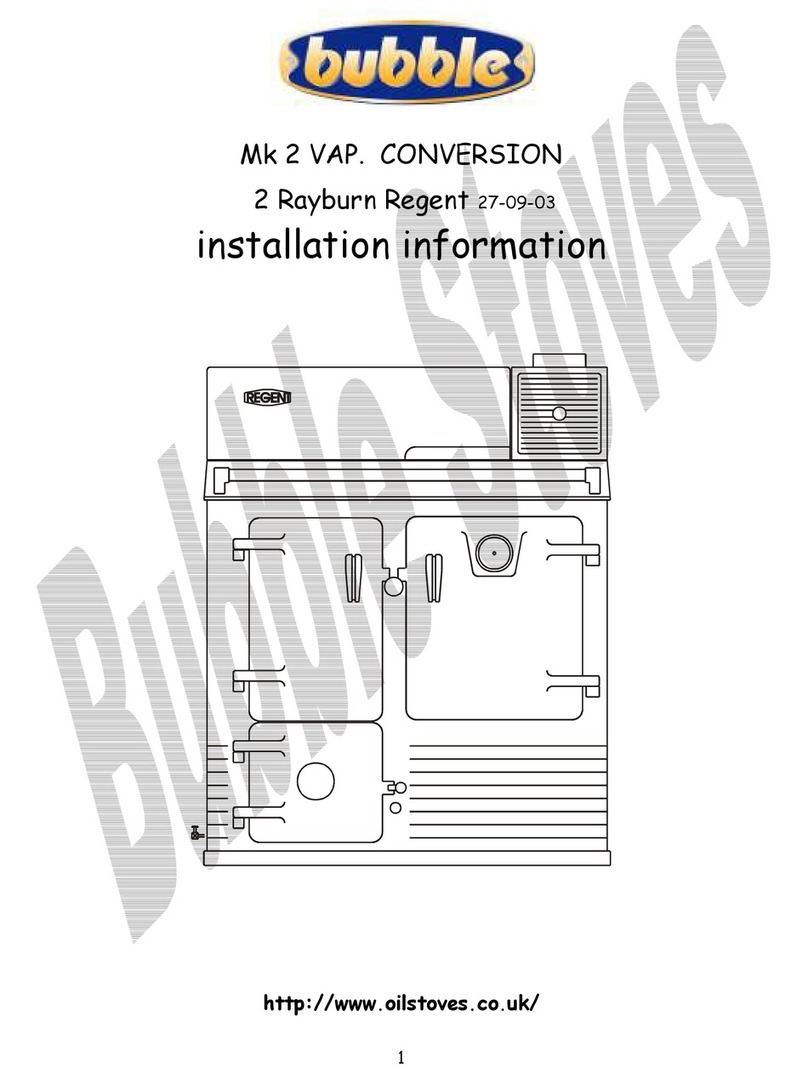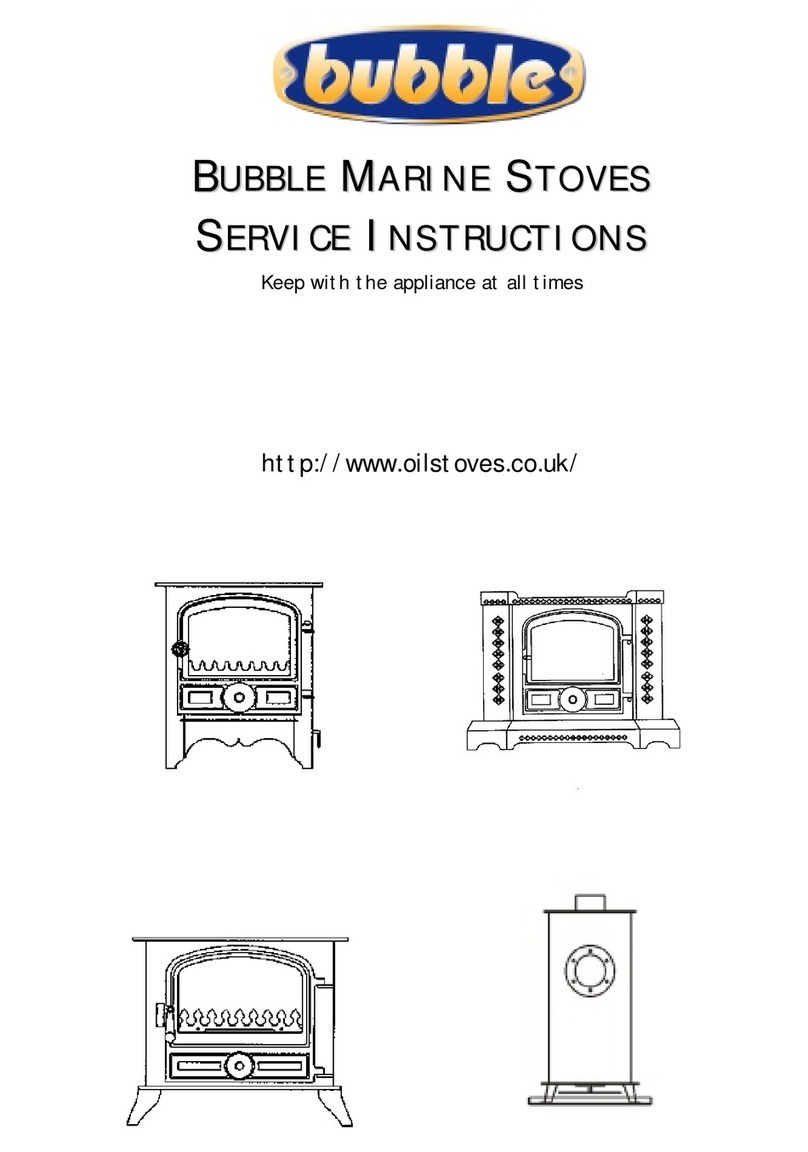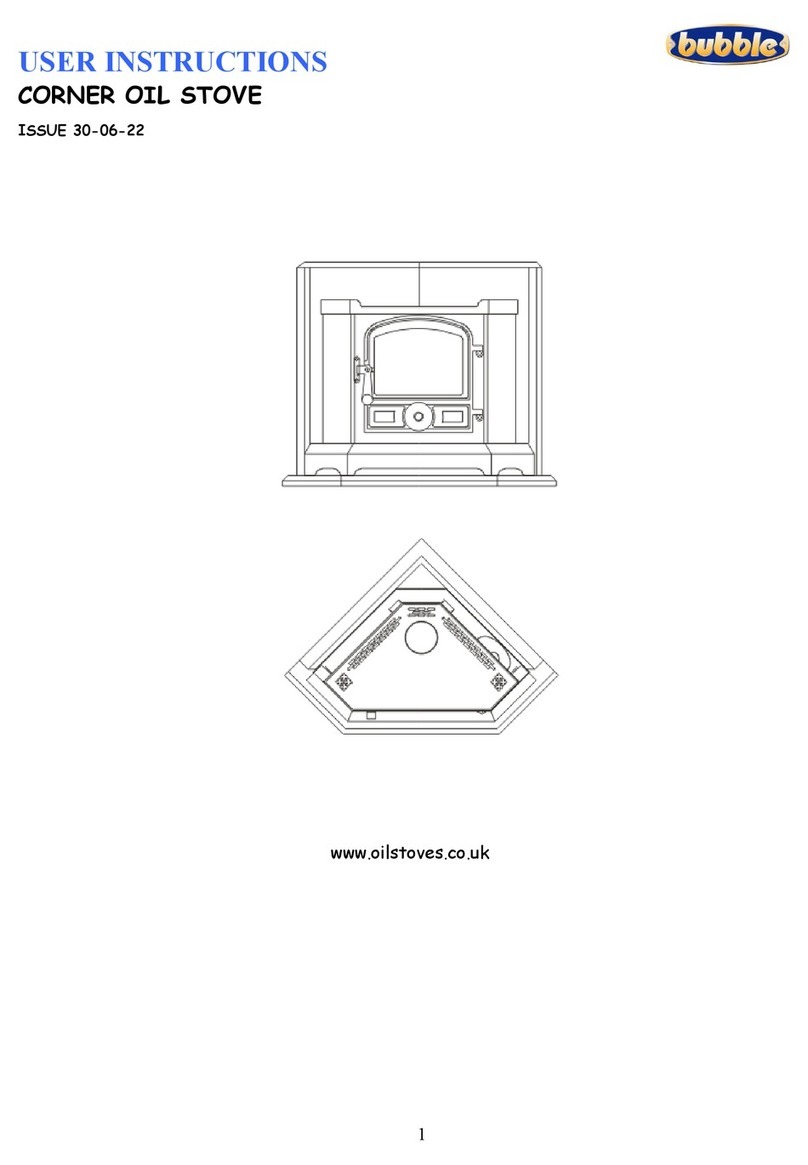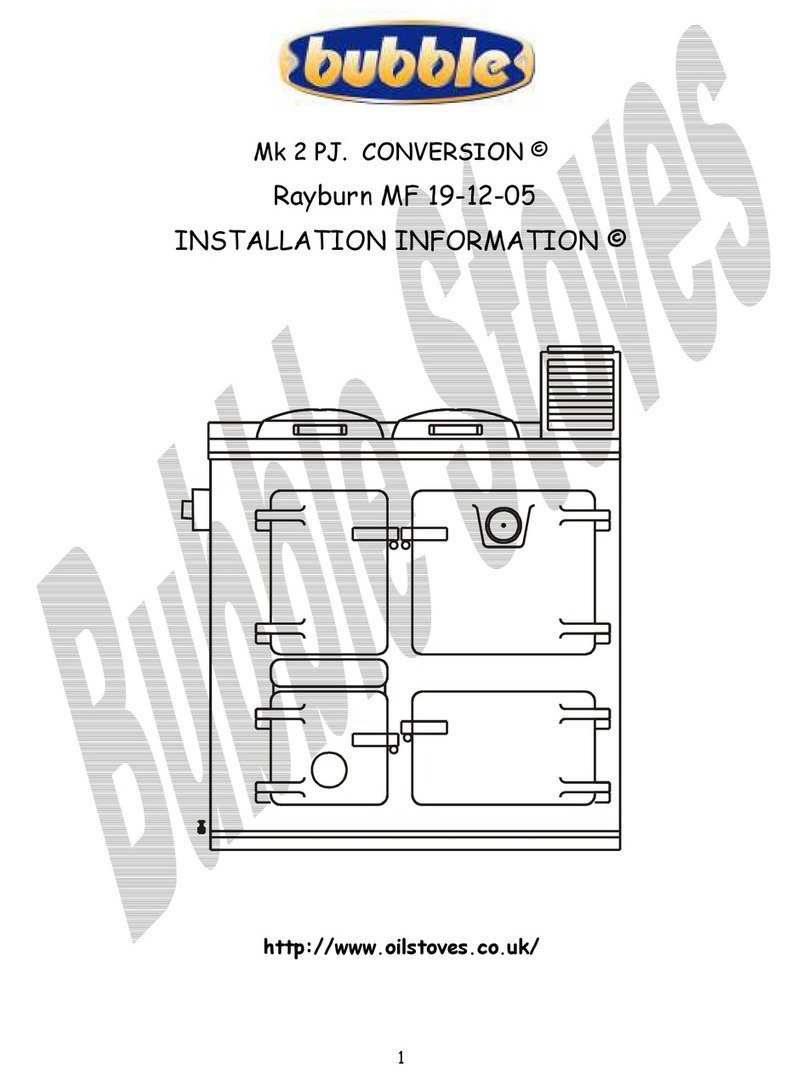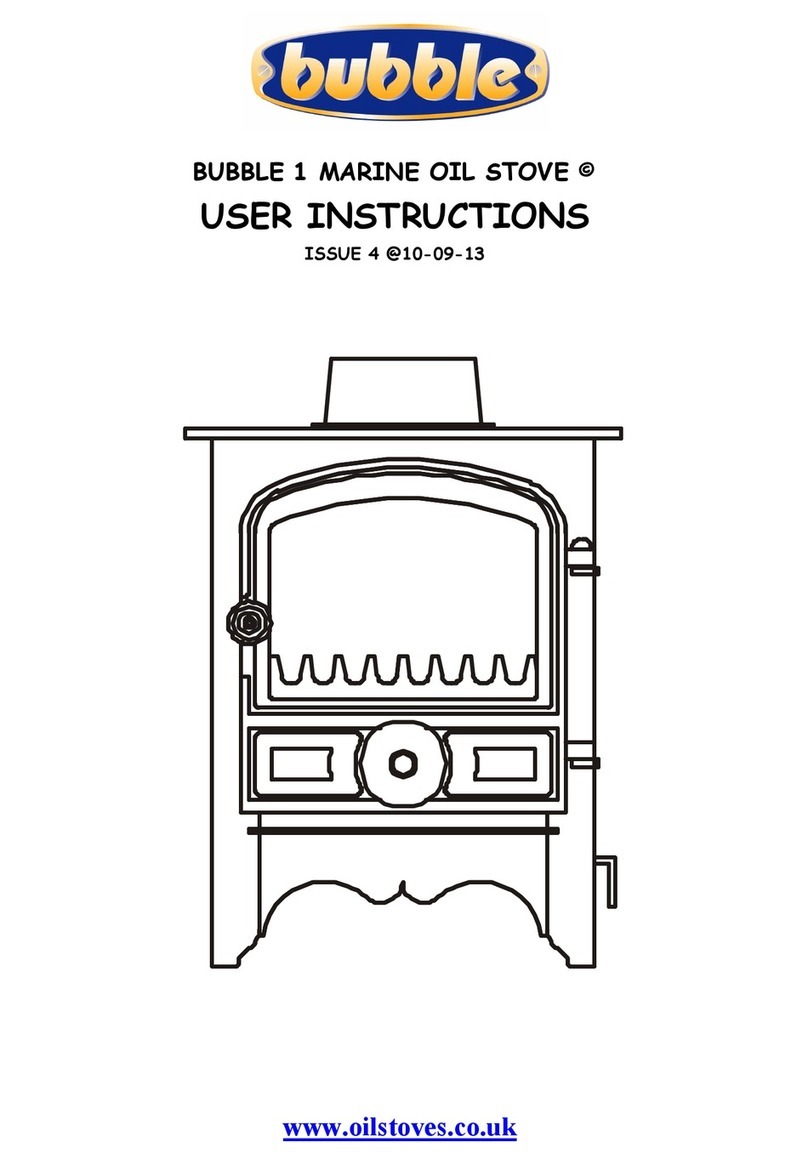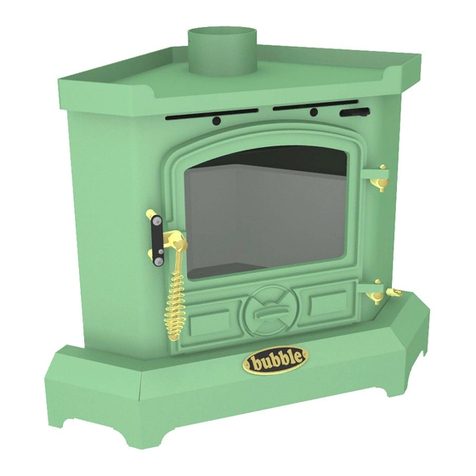
• Where to locate the stove.
• How to deal with fireplace design.
• Where to locate the oil tank.
• How to get an oil supply to the stove.
• How to fit the chimney.
• How to connect water to the stove.
• How to disconnect and remove the stove,
easily.
The new build situation should be the easiest.
The established boat situation will require careful
attention to the sighting of the stove in relation to
flue positions and existing fittings positions.
In replacement situations it may well be necessary to
blank off the existing through roof flue position and
cut a fresh one to suit the new location.
2. ABOUT THE STOVE
3. The top of the stove can be used for warming and
cooking.
5. Standard deck flanges and traditional chimney
extensions can be used above deck.
6. The stove will provide space or combined space and
water heating.
There are two choices of boiler either a 3 or 9kW and
there are 2 x 1" BSP female sockets for water
connections to be made at the rear of the stove as
required.
8. The boilers are high water content and suitable for
pumped or gravity systems, pressurised or open
vented, provided that the systems are correctly
designed.
3. OPERATING PRINCIPLES.
1. The stove is a space heater, which burns diesel oil in
a controlled manner utilizing a chimney to discharge
the products of combustion.
2. The stove generates heat from burning oil mixed
with air in a vaporizing pot located in the bottom of
the stove.
3. Once lit, oil goes into the pot at a steady and
controlled rate via gravity flow, metered by the OIL
CONTROL VALVE the oil flow can be controlled from
minimum to maximum or any setting in between
determined by where you set the oil flow control knob.
4. Air is sucked into the pot by the natural action of
the negative pressure in the chimney and to allow the
chimney to work correctly it is essential that you have
adequate, unrestricted ventilation into the area where
the stove is situated.
5. The amount of oil that can be successfully burned is
directly proportional to the amount of air that the
chimney can draw into the pot and so to achieve
adequate combustion a balanced and appropriate flow
of both oil and air is required.
4. CONTROLS
The output of the stove is regulated by the amount of
oil allowed to go into it and this function is controlled
by the -:
OIL CONTROL VALVE (O.C.V.), which is situated at
the rear of the stove.
Turning the knob anti clockwise controls the oil flow.
The knob is located at the top rear of the stove and is
calibrated from off position (fully clockwise) through
6 graduations to maximum.
Controls for the stove will vary, depending on which
valve is fitted to it.
Depending upon its intended use the stove could be
fitted with either a ships valve (OCI 252 AY sea
going) or a (Toby DVR inland water) valve.
The control for the sea going ships valve comprises
Oil flow control only. ( OCI 252AY Ships Valve)
For thermostatic control we recommend the use of a
Teddington 90 deg C, KBB remote sensing fire valve,
with the sensing file attached to the hot pipe of the
appliance.
The control for the inland waterways version has
controls which are-:
Oil flow control.
Oil valve trip lever.
For boiler versions of the stove there are two
additional controls.
Thermostat control.
Safety Stat reset control.
The Toby oil control valve used on boiler stoves has a
built in, non electric, modulating thermostat control,
which will put the fire on to low fire when the target
temperature has been achieved.
In addition to this there is also a similar safety stat,
which will shut the burner down, should the water
exceed 80 deg C.
The safety stat re set control is lifted to reset the
valve, should the stat trip. (For details see the
separate booklet on oil valve details supplied with the
stove.)
The Toby valve has to be tripped into action by lifting
the trip lever on the side of the valve.
The flow of oil into the pot can be adjusted via the
knob on top of extension rod rising up from the oil
control valve.
8. With the increased flow of oil, extra heat is
generated, which in turn stimulates the chimney to
work harder and consequently draw more air into the
pot to maintain an adequate fuel air ratio.
